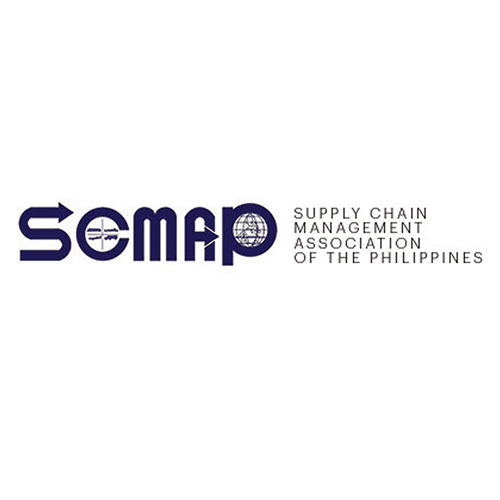First off, a personal note: it’s great to be able to travel again.
Sure, in both instances it’s for work: I just came from Hong Kong for this year’s Asian Logistics, Maritime and Aviation Conference, co-organized by the Hong Kong Trade Development Council; last month I was in Singapore for the Smart Supply Chain and Logistics Innovation Asia conference, in which our president Dennis Llovido was one of the speakers. After almost four years of being stuck in one place, it’s nice to be able to fly out and see how our neighbors are doing – and, for the purposes of this column, what our neighbors are doing.
After taking on the spotlight during the height of the COVID-19 pandemic, efforts to improve our supply chains continue apace, both for businesses and governments. Attending industry events like these are important avenues to understand what they have in mind – of course, events here in the Philippines do the same thing, but different perspectives are always great.
It’s fascinating seeing what topics the supply chain players of the region have at the top of their minds across the years. In the middle of the 2010s we were talking about e-commerce and how we can better deliver to our customers. Just before the pandemic struck, we were already surrounded by uncertainty, thanks to a shifting geopolitical landscape that seemed to emphasize protectionist measures over our ability to trade freely with other markets. The pandemic, of course, accelerated discussions on digitalization. (I guess nothing speeds things up than having to attend a conference through a laptop.)
Now the sector is preoccupied with sustainability, especially as the discussion broadens. It’s no longer just the domain of ecological experts; with potential solutions within reach, those directly involved in supply chains can have a say on what we can do.
Also fascinating is seeing the progress made by more advanced economies. This is the sixth time I have flown to Hong Kong for the ALMAC, and every time I see public sector stakeholders discuss the progress they’ve made in improving supply chain support and infrastructure, as well as future initiatives. While the focus this year was squarely on economic recovery after years of the pandemic, both the HKSAR government and that of mainland China’s are working to continue leveraging on the Greater Bay Area, which promises, among others, to be a key logistics hub in the region. I got a reminder of this as soon as my plane landed: work to increase capacity at the Hong Kong International Airport – including an expanded second terminal and a third runway – is underway. (And one of the ALMAC’s major sponsors is the Cainiao Smart Gateway, located near the airport, which only opened last month.)
All that makes me wonder about our own efforts to improve our supply chains. No, I’m not going to complain about the speed of our own initiatives. One, many have written about it in length, and two, I am actually optimistic about where our industry is headed, thanks to a wider recognition of supply chain’s role in the national economy, and steady investment in infrastructure. I feel something is missing, though: I think we need a really unified approach to our supply chains.
But then, it can’t be helped. Our primary focus is on improving our domestic supply chains. Moving goods and services to over 7,000 islands is obviously more daunting than, say, in a 750 square kilometer area (that’s Singapore). Our focus on both strengthening our food logistics and onboarding our MSMEs into the wider supply chain ecosystem are admirable, and more importantly, chime in with this government’s other priorities. But as our neighbors are discussing the opportunities posed by the trends of reshoring and nearshoring, I feel we are missing out. Yes, infrastructure is a long-term investment, and we are still playing catch-up. Announcements like the establishment of a new production facility for appliance giant Dyson in Batangas come few and far between. It’s also possible that while we pursue better trade linkages (like the recently approved FTA between the Philippines and South Korea) the political clamor is to cater to the more immediate needs of Filipinos.
I also see the potential for more pressure on our government to come up with stronger initiatives to address concerns on sustainability. We do have ESG reporting rules, and a push towards growing the demand for electric vehicles, but there seems to be a lack of a whole-of-government approach to this. Surely if we have clearer plans, we can attract more investment and better bring in our own enterprises to tackle this urgent cause? For example, do we have a long-term plan to shift towards more sustainable energy, or will that be purely led by the private sector once again? It’s a question that needs urgent answers, especially as climate experts ring the alarms again that we’re going to overshoot our target temperature rises and eventually suffer the consequences. And how do we support the people and enterprises that will be affected? Subsidies, tax incentives… but judging from how we’re talking about PUV modernization, which is also packaged as a sustainability effort, well, we have a long way to go.
It’s a given that we won’t be at par with some of our other neighbors, who have long invested in these efforts. But, again, we’re not that far behind. We need stronger collaboration, yes, but we also need clearer plans and a better view of what we are facing ahead. This is why it pays to peek into your neighbors’ yards once in a while… and this is why it’s great to be flying again.
Henrik Batallones is the marketing and communications director of SCMAP, and editor-in-chief of its official publication, Supply Chain Philippines. More information about SCMAP is available at scmap.org.
Previous column: ‘Slow Food’ and the Supply Chain





